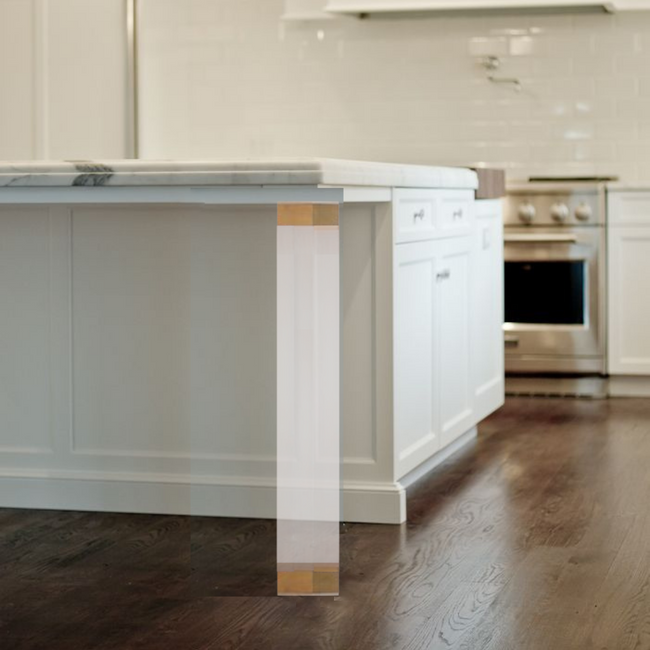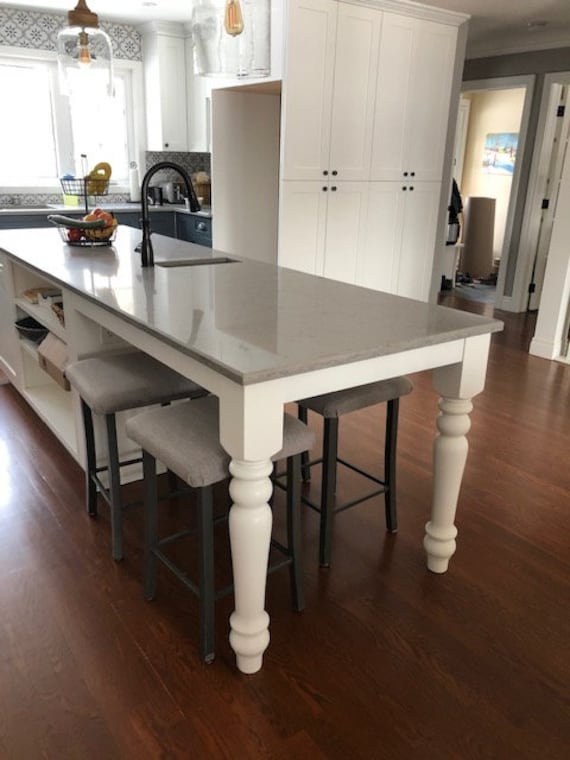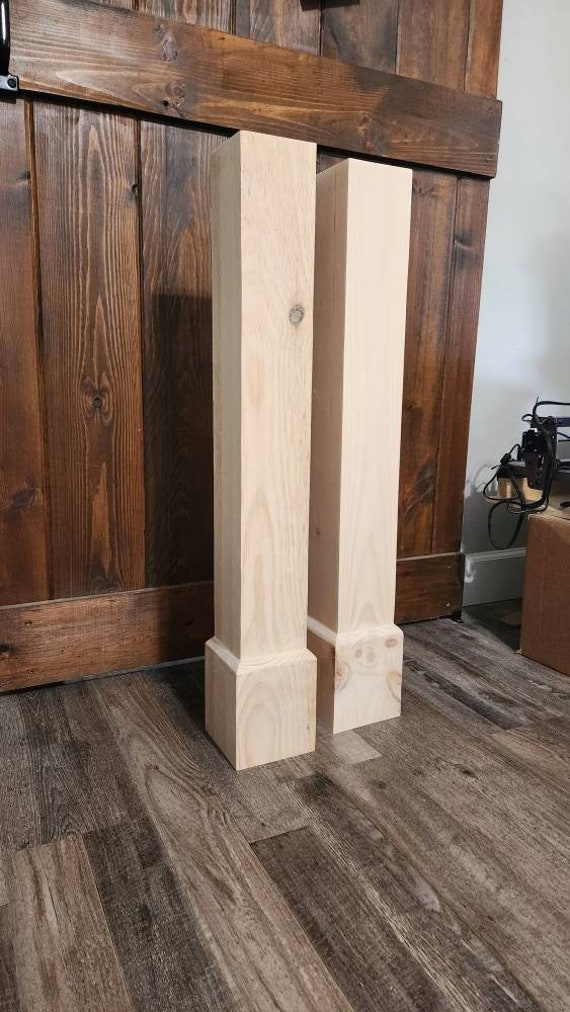The Most Effective Kitchen Island Leg Options for Modern and Typical Kitchens
The Most Effective Kitchen Island Leg Options for Modern and Typical Kitchens
Blog Article
The Importance of a Sturdy Kitchen Island Leg in Developing a Functional Cooking Location
A sturdy kitchen area island leg acts as an essential element in developing a practical food preparation environment, offering essential assistance for both the kitchen counter and different kitchen activities. The security it supplies can substantially reduce the danger of accidents in high-traffic areas, while likewise adding to the overall visual coherence of the room. As kitchens develop into multifunctional areas for cooking, eating, and socializing, the choice of products and layout considerations for island legs comes to be increasingly important. Understanding these components can change your cooking area into a safer and more efficient area, prompting more exploration into the very best options available.
Advantages of Sturdy Island Legs
Providing crucial assistance, tough kitchen island legs play a critical duty in improving the performance and durability of kitchen area islands - kitchen island leg. These legs not only birth the weight of the counter top and any additional products positioned on the island, but also add to the total security of the framework. A well-supported kitchen area island makes sure that it continues to be practical and upright, also under heavy use, which is especially vital in hectic kitchen settings
Moreover, tough island legs can boost the visual allure of the kitchen. They provide a solid framework that can complement different style styles, from modern to typical. This flexibility enables house owners to personalize their cooking area islands according to individual preference while ensuring that the structural stability remains uncompromised.
In addition to their helpful role, robust kitchen island legs can also improve safety and security. Inevitably, spending in tough cooking area island legs is vital for a useful and visually pleasing cooking area.
Materials for Kitchen Island Legs
When selecting products for kitchen island legs, toughness and visual allure are crucial aspects to consider,. One of the most common products consist of hardwood, steel, and engineered wood, each offering distinct benefits.
Wood, such as maple, oak, or cherry, is a timeless choice as a result of its toughness and timeless appeal (kitchen island leg). It can stand up to considerable weight and is resistant to wear, making it suitable for high-use kitchen settings. Furthermore, hardwood can be discolored or repainted to enhance numerous kitchen designs
Steel legs, usually crafted from stainless steel or functioned iron, give a commercial and modern-day appearance. They are exceptionally strong and can support considerable lots while being resistant to wetness and heat, which is beneficial in a cooking area. Metal legs can also be conveniently cleansed, enhancing their usefulness.

Design Considerations for Security
The option of products for kitchen island legs directly affects the design factors to consider for stability. When creating a kitchen area island, it is vital to examine the weight-bearing capacity of the chosen materials. Heavier products, such as solid wood or metal, typically supply greater security, specifically under the stress and anxiety of everyday usage.
In addition, the leg design have to include proper geometry to improve stability. A broader base increases the support location, minimizing the threat of tottering or tipping. Factor to consider should additionally be provided to the height of the legs; out of proportion leg sizes can lead to imbalance, endangering the total security of the island.
In addition, the circulation of weight across the island is critical. Ensuring that the leg placement aligns with the heaviest parts, such as home appliances and kitchen counters, will additionally improve stability.
Upkeep Tips for Durability

Cleaning up is one more crucial facet of maintenance. Relying on the product of the legs-- whether wood, metal, or composite-- suitable cleansing techniques ought to be used. For wooden legs, a gentle wipe with a suitable wood and a damp towel cleaner will help maintain their coating. Metal legs might need a light polish to stop corrosion and keep their luster.
Additionally, tightening up screws and bolts frequently can make sure security and prevent wobbling. If the cooking area island experiences hefty use, take into consideration strengthening the legs with added brackets or supports to improve resilience. Finally, using a protective coating or sealer can safeguard against dampness and spots, prolonging the lifespan of the legs. By complying with these upkeep tips, homeowners can guarantee their cooking area island legs stay why not try here durable and useful for years to come.
Selecting the Right Leg Style
Routine upkeep makes certain that cooking area island legs continue to be practical and strong, yet picking the best leg design is just as vital for both aesthetic appeals and support. The option of leg style can considerably influence the total design and consistency of your cooking area.

Capability is one more important facet. Thicker legs or those with a durable base can support larger kitchen counters and tools, enhancing the island's energy. Alternatively, slender legs might develop a ventilated appearance, suitable for lighter layouts but possibly much less helpful.
Final Thought
In summary, the importance of tough kitchen island legs can not be overemphasized in the creation of a functional cooking location. These legs provide crucial support, enhance stability, and add to the total aesthetic of the kitchen. By carefully selecting ideal products and designs, as well as executing proper upkeep methods, the durability and efficiency of kitchen area islands can be guaranteed. Ultimately, buying robust island legs is fundamental to achieving a safe and reliable cooking setting.
A durable kitchen island leg serves great site as an essential component in developing a practical cooking environment, offering essential support for both the countertop and different cooking area tasks.Giving essential support, tough kitchen island legs play an essential role in improving the capability and resilience of kitchen area islands. Ultimately, spending in strong kitchen area island legs is vital for a functional and visually pleasing cooking area.
Consideration needs to additionally be provided to the elevation of the legs; disproportionate leg lengths can lead to imbalance, jeopardizing the overall security of the island.
Wooden legs provide warmth and a traditional appearance, while metal legs use a commercial and contemporary feel.
Report this page